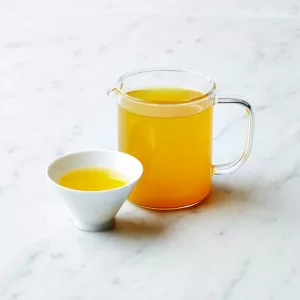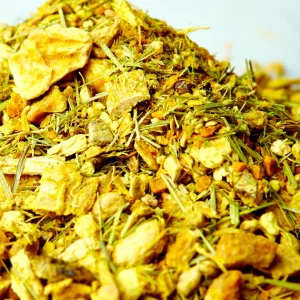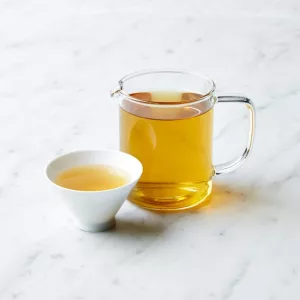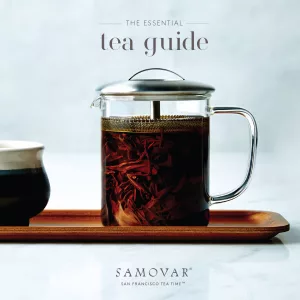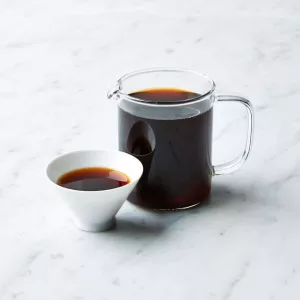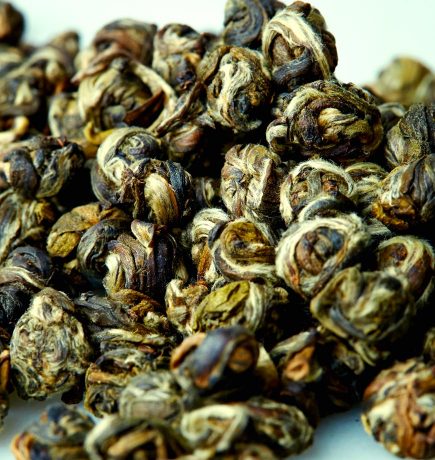Picking. Sorting. Steaming. Firing. Twisting. Oxidizing.
All of these techniques and more are used to produce the best tasting tea. Learn more about how the perfect leaf becomes the perfect sip.
All tea is made from the same plant.
Yes, you read right, all tea, whether it’s black, oolong, green, white, or pu-erh, comes from the Camellia sinensis plant in the same way that all wine comes from the grape, albeit different varietals.
Like wine, different tea leaf varietals have developed in different geographic locations. Each tea varietal’s unique characteristics are the result of the human selection, soil composition, and local weather patterns.
Processing makes all the difference.
Processing the tea in different ways creates different kinds of teas. (Just for the record, we need to differentiate between tea and herbal infusions. The former is what we’re describing here, the latter is a beverage made from herbs and plants such as lavender, chamomile, rooibos, lemongrass, and osmanthus.)
In general, the more oxidized the tea is, the darker the infusion will be.
White tea and Green tea are the least oxidized and the color of these teas is little changed from the buds and leaves on the bush.
Black tea undergoes a complex and lengthy processing, which involves full oxidation of the leaves.
The amount of oxidation a tealeaf is allowed to undergo before this oxidation is stopped, determines what kind of tea you will get. More oxidation produces dark-colored Black and Pu-erh teas. Less oxygen results in Green and White teas. In the middle are Oolongs, which have a complex, autumnal flavor.
Most kinds of tea go through a process of plucking, withering, rolling, oxidation and drying or firing. Here’s what each of these terms means:
Plucking
Before tea can be processed, it must, of course, be picked. Only the bud and two small leaves are plucked from the best tea plants to ensure the best tasting tea.
Withering and Steaming
Withering is particularly important for white, oolong, black and pu-erh teas.
After picking, the leaves are laid out to dry on bamboo trays or in large in-door areas where heated air is forced over them if the climate is too cool to heat the leaves naturally. This process reduces water content and makes the leaves pliable enough to move to the next step in the process, rolling.
In the case of green teas, leaves are often steamed, baked, or pan-fired instead of, or immediately after, being withered briefly. Steaming, pan firing, or baking arrests oxidation of the leaves so that they remain green.
Rolling
The next step in tea production is rolling.
Have you ever wondered how oolongs, some greens, and black tea leaves get scrunched up?
Traditionally, this was done by hand. This hand rolling is still used to make extremely rare high-end teas, but today, machines are often used to roll and shape the leaves. This process helps break down the leaf cell structure, which releases the juices and oils from the leaves, encourages a more uniform oxidation, and gives each tea its distinctive flavor.
 Oxidation
Oxidation
Oxidation is the chemical process that is easiest to observe by looking at a dried tealeaf’s color. The greener the leaf, the less oxidized it is. Like a cut banana turning brown, the tea leaf turns brown as it oxidizes.
Japanese steamed teas, senchas, are the least oxidized (as apparent in the vibrant green color of the leaf and infusion). Black teas are the most oxidized (as you can see in the dark color of the leaf and deep crimson-brown of the infusion.
Drying or Firing
Tea is finally dried evenly, without burning the leaves, in large ovens or drying machines to complete halt oxidation and lock in the final flavor.
To learn more about how tea is made, read the seminal work on tea: New Tea Lover’s Treasury by James Norwood Pratt, or read on how to brew tea, or browse our shop for your new favorite tea.

